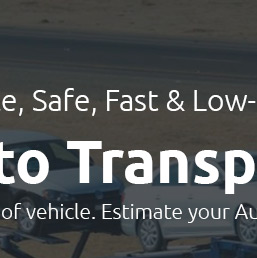 |
|
||||
 |
 |
 |
 |
||
 |
 |
|||||
 |
 |
 |
 |
 |
 |
 |
||
 |
 |
 |
 |
 |
 |
 |
 |
 |
 |
 |
|
 |
RV Shipping to Alaska: A Comprehensive GuideTransporting an RV to Alaska is a venture laden with both excitement and logistical challenges, requiring thoughtful consideration and thorough planning. Alaska's majestic landscapes, rich wildlife, and untouched beauty make it a coveted destination for RV enthusiasts. However, the journey to get there, especially if you are shipping your RV, can be daunting. Here, we delve into the essential aspects of RV shipping to Alaska, addressing common concerns and offering valuable tips. First and foremost, the decision to ship an RV rather than drive it depends largely on personal circumstances and preferences. While driving offers the allure of an adventurous road trip through Canada, shipping your RV might be a more practical solution if you are pressed for time or wish to avoid the wear and tear on your vehicle. One must consider the available shipping methods when contemplating this decision. Typically, RVs can be shipped via a roll-on/roll-off service, where the vehicle is driven onto a ferry or a flatbed truck, or using a container shipping service for smaller RVs. Each method has its pros and cons, with costs varying accordingly. Cost Considerations play a significant role in the decision-making process. Shipping costs can be substantial, often depending on the size of the RV and the distance from the point of origin to the destination port in Alaska. It's advisable to obtain multiple quotes from reputable shipping companies to compare prices and services. Bear in mind that the cheapest option may not always be the best; reliability and insurance coverage are paramount to ensure your RV arrives safely. Moreover, the shipping timeline is another crucial factor. Shipping an RV to Alaska can take several weeks, especially during peak seasons when demand for shipping services is high. Planning ahead is essential to avoid delays, particularly if your travel schedule is tight. Booking well in advance can also secure better rates and availability. When preparing your RV for shipment, certain precautions are necessary to ensure it arrives in pristine condition. This includes securing all loose items inside the RV, disconnecting batteries, and checking for any leaks or mechanical issues. It's also wise to document the RV's condition with photographs before shipping, providing a point of reference should any disputes arise regarding damage during transit. Insurance Coverage cannot be overstated. While most shipping companies offer basic insurance coverage, it may be prudent to purchase additional coverage to protect against unforeseen incidents. Reading the fine print of the insurance policy is crucial to understand what is and isn't covered. Finally, navigating the customs and import regulations for transporting an RV into Alaska is a vital step. Although Alaska is a U.S. state, if you're shipping from another country, you'll need to comply with specific import requirements. This often involves providing proof of ownership, a detailed inventory of the RV's contents, and, in some cases, modifications to meet U.S. vehicle standards. In conclusion, while shipping an RV to Alaska involves meticulous planning and consideration of various factors, the reward of exploring Alaska's breathtaking scenery makes the effort worthwhile. By understanding the shipping process, weighing the costs and benefits, and preparing your RV adequately, you can ensure a smooth and successful transition to one of the most awe-inspiring destinations for RV adventurers.
Ultimately, whether you choose to ship or drive, reaching the Last Frontier promises an unforgettable journey and an experience of a lifetime. https://www.lynden.com/aml/shipping-personal-items/shipping-a-trailer/
Shipping your trailer to and from Alaska or Hawaii is simple with Alaska Marine Lines. Our barge service is a reliable and economical option. https://www.totemaritime.com/alaska/vehicles-rvs-boats
TOTE's "Built for Alaska" ships are specially engineered to move your vehicle safely and on-time across the Gulf of Alaska. With the best on-time performance in ... https://www.nationwideunitedautotransport.com/rv-transport-alaska/
We specialize in efficiently transporting various trailer types, including fifth wheel trailers, motorhomes, cargo trailers, toy haulers, camper vans, and more.
|
